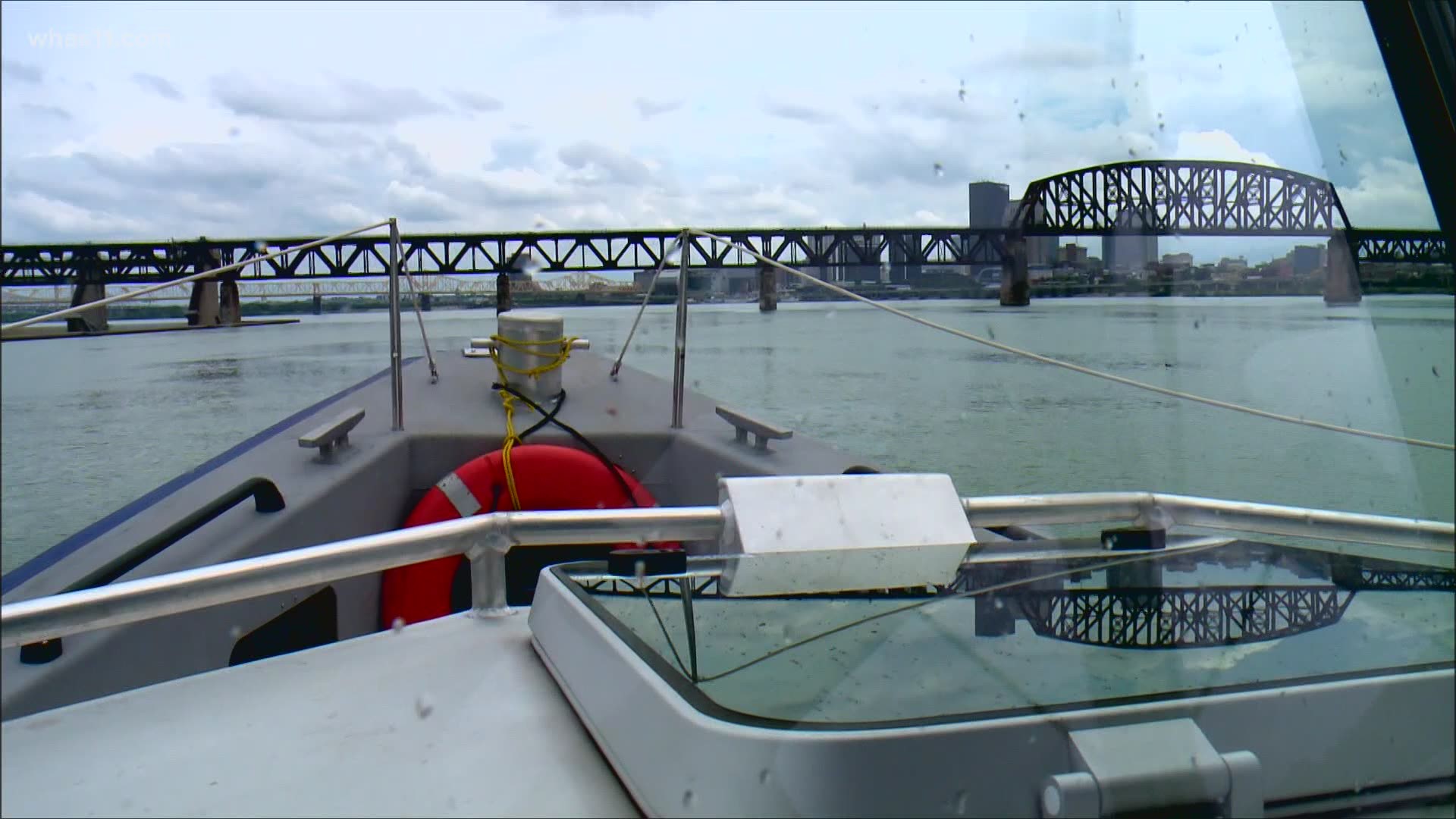LOUISVILLE, Ky. — When searches reach the Ohio River, the Louisville Metro Police Department's dive team is regularly called on to look in the muddied water.
"It could be somebody robbing a bank and throwing the gun in the river...we've recovered stolen cars before," said officer Chad Crick, dive team instructor.
The unit has monthly trainings to keep up with techniques. They’re especially important because of the lack of visibility divers have under water. Even just a few feet below the surface of the Ohio River becomes total darkness.
“Absolutely everything we do in the river is by feel,” Crick said.
Most of the time, divers can’t even see their hand in front of their face.
Crick and his unit most often search the Ohio for evidence, but every so often, their search is for someone instead of something.
"Here, on average, one person dies every year," said Dale A. Brown with the Falls of the Ohio State Park. "One person drowns every year."
Brown has been working and volunteering with the Falls of the Ohio for more than a decade, and is familiar with the river's risks.
"Two years ago...two fisherman got swept in the river who were experienced fisherman," Brown said. "One was able to be rescued by a bystander, the other one was found six miles down the river by Sherman Minton Bridge."
That fisherman, 26-year-old Donnie Watson, was discovered by search volunteer Larry Church in July of 2019. Church was a stranger to Watson, but heard about the search for a missing boater and rushed to the river to help.
"All these buddies got on my boat and we went looking," Church said.
One of the people on Church's boat was Josh Lunsford. Lunsford and Watson had been friends for six years, and he knew his buddy was anxious to get his new boat on the Ohio River for the first time.
"I was actually on the phone with him trying to get the boat started as he was getting closer to the falls," Lunsford said, "and then my phone call ended to him without saying bye...but that was the last time I spoke to him."
Watson and another boater were in a restricted area past Second Street Bridge when the current pushed them towards the McAlpine Dam.
Officials said the men put on their life jackets before they were thrown overboard, but the Indiana Department of Natural Resources explained the men were sucked through the dam, ripping their life jackets apart.
After three days of searching, Church spotted him by a power plant while passing New Albany.
"He actually floated by his family that was on the bank looking," Church said.
Church alerted officials, while he and others on the boatgot Watson out of the water.
"I sat over the side of the boat holding onto him with my hand on his back, just you know, talking to him," Lunsford said.
Church said he has helped recover six people from the Ohio River, relying heavily on similar sonar technology that LMPD uses. The police boat is also equipped with infrared technology.
"If the person is still alive and they've only been in the water for a short amount of time, then they're going to show up white on the screen," Crick said.
During the summer, the dive team already trains twice a month to sharpen their skill, but Crick said the cameras are especially important when conditions are too dangerous for the divers.
"There has been several missions that we, you know, you just feel helpless because there's...the environmental conditions will not allow you to do what you need to do to complete the mission," Crick said. "They want to find that person and return them to their family and that weighs on them heavily."
Crick said 'last seen' points are vital to giving the unit a chance to find someone.
"You can spend a lot of time on divers in an area that may not even be the area that you should be searching, and that's happened before," Crick said.
Crick said all boaters — even the most experienced in the community — need to be careful.
"Make sure you have life jackets on," Crick said. "We've never recovered anybody that's had a life jacket on."
Despite how skilled Church is, he said no boater should ever become complacent on the Ohio River.
"This river is dangerous," Church said. "I grew up on it and not one time am I ever comfortable on it. Down below that dam…you mess up down there, a lot of times you mess up once. You don't get a second time."
Church also keeps a radio on his boat so they can call for help at any time.
"Everything about water is awesome, and I wouldn't change it for anything," Lunsford said. "You just gotta know your stuff, whether you're on a canoe, whether you're on a pontoon, whether you're just sitting on a dock, you gotta be ready for just about anything."
Church also helped search for Jacob Stover, the 16-year-old kayaker who went missing on the Ohio River in January. Like Watson, Stover's family believes he went into a restricted area past Second Street Bridge.
The Stovers hope their son's story can help start crucial conversations around safety on the deceiving water of the Ohio River, including more legible signs marking the end point for most recreational vehicles on the river.
To read their story, click here.
►Make it easy to keep up-to-date with more stories like this. Download the WHAS11 News app now. For Apple or Android users.
Have a news tip? Email assign@whas11.com, visit our Facebook page or Twitter feed.

